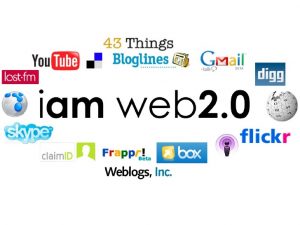Web 2.0s and The SEO Company

Every SEO company has its own link-building strategy that depends on package price, agency size, as well as the scope of work included in the contract (if a contract exists). This strategy ranges from simple blog commenting on relevant blogs and press releases to all-out thought leadership and industry influencer outreach.
One of The Most Effective Methods, However, is Building Web 2.0 Blogs as Tier-one Properties.
The objective of this article is to impart knowledge to business owners interested in the services of an SEO firm. The knowledge on building web 2.0 properties will set them on the right path towards choosing a suitable SEO Agency for their business.
What Are Web 2.0 Properties?
Web 2.0 properties, to put it simply, are free-hosted blogs from Blogger, WordPress, Weebly, and the like. An example of a web 2.0 blog would be “seo-agency.wordpress.com”, but more recently, Facebook pages, Twitter accounts, and other forms of social media are being considered as web 2.0 properties now.
Why Are They Used and How do They Fit in a Search Engine Optimization Campaign?

The main objective of using web 2.0 properties is to utilize the domain authority of their original domains in order to create powerful links that a webmaster can fully control – the main advantage over other link-building methods like guest posting.
For example, WordPress has a Domain Authority (DA) of 98. While most websites have a DA that ranges from 20-30, a website with a DA of 40 is already considered an authority site. This further implies that a site with a DA of 98 can take a number of links without getting penalized.
A newly created blog has a PA of 1, however, so SEOs usually use GSA Search Engine Ranker to fire tier 2 links to the blog to increase its PA. This is the reason why a high DA is needed. Of course, from the looks of it, this method is a bit grey-hat but a lot of people claiming to be white-hat SEOs use this for their clients.
That being said, people should be absolutely sure that the SEO company they will be hiring knows what they are doing – one wrong move and web 2.0 properties can potentially kill a website.
Building web 2.0 properties is part of creating foundational links for a website – the main purpose of these blogs is to diversify the backlink profile as well as d some good link juice.
How To Build Awesome Web 2.0 Properties
In this section, this article will detail how web 2.0 properties are built in order to impart knowledge to those looking for a great SEO firm. This section is important because it enables people to know how these properties are built and as a bonus, look knowledgeable during interviews.
Step 1: Choosing From Web 2.0 platforms available
- There are a plethora of web 2.0 properties that are currently available, and there are many more being made or discovered every day.
- Choosing 5 to 10 is recommended but according to reports, 7 is a sweet spot.
- Choosing less will actually render the strategy ineffective due to lack of links and getting more will make it harder for the SEO agency to manage.
 So how does an SEO choose a platform?
So how does an SEO choose a platform?
- First off, the blog should allow search engines to crawl it.
- This is the most important part because no matter how high quality a blog is, a backlink from it will not matter if it is not indexed.
- Platforms like Jimdo have robots.txt designed to block any spider crawlers so those kinds should be watched out for.
- It is also recommended to create a blog from famous and huge platforms like WordPress or Tumblr.
- The reason behind this is that their DA is already high.
- And Google loves these sites so there’s less chance of getting penalized.
Step 2: Registering The Blogs
5 to 10 properties can be registered using one email address. Any more than that and it will look unnatural and leaves a sort of “footprint” Google can catch.
Who in their right mind would register 20 blogs anyway?
Step 3: Writing The Content

- To spice things up, one should create a different persona for each blog.
- Personas can range from a personal blog or a fan blog that would review a business’ product to a legitimate company persona.
- Of course, casual voice and articles in the t person should be used when one goes for a personal blog.
- On the other hand, a blog with a company persona should sound professional.
- It is recommended to create an About Us and Contact Us page, as well as a welcome post to initially populate the site.
- Adding pictures and videos proves to be effective as well.
Step 4: Placing The Link
The backlink should come from a super relevant, 500-words (or more) article, and only brand or naked URLs should be used. It must not be an exact match anchor of the target keyword because those keyword types should be reserved for high-powered blogs.
Conclusion
The article showed what web 2.0 properties are, how are they used, and where do they fit in a search engine optimization campaign. The objective of this is to impart knowledge on this part of link building in hopes of educating clients better.
